"The hallaca is the only family bond that is repeated every twelve months. Around it is the ritual of the whole family reunited and refers you to the family past that establishes a historical relationship."
Elías Pino Iturrieta
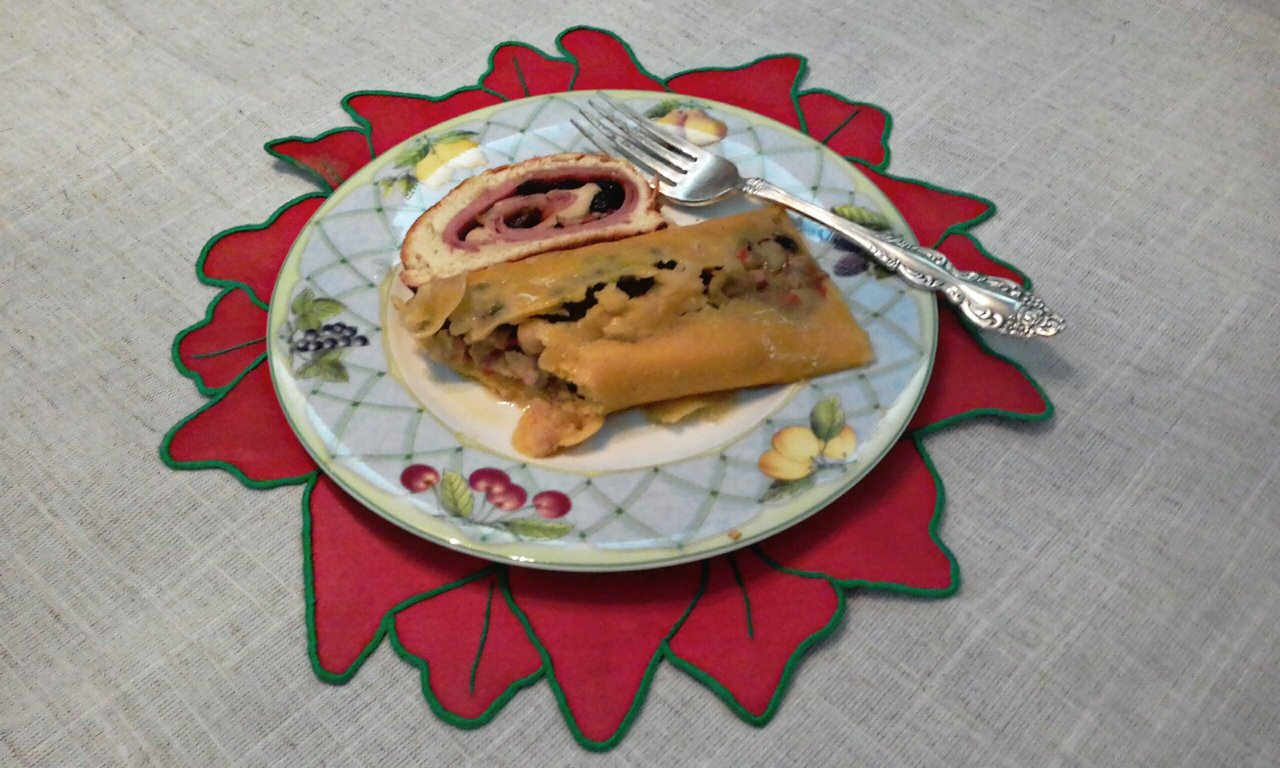
Venezuelan Hallaca: an ancestral dish present at the tables of the world
The hallaca or hayaca is a typical dish of the Christmas holidays in Venezuela, and that bears some resemblance to the tamale of Mexico and Central America. It consists of a cake made with cornmeal dough seasoned with chicken or hen and pigmented with "onoto", a dye and seasoning also known in other countries as "achiote", which is filled with a stew based on beef, pork and chicken or hen, to which green olives, raisins, capers, paprika, garlic and onions are added, among other ingredients that can vary according to the region, and then be wrapped rectangularly in banana leaves, which is tied with wick and boiled in water before serving it on the table.
This dish is part of the Venezuelan unconscious, being the most extraordinary integrating element within diversity, because it allows everyone to be united, regardless of race, creed or political affiliation, around their preparation and subsequent tasting.
The word hallaca appears in a dictionary written by Fray Domingo de Santo Tomás, published in 1560 that exposes its origin of the Quechua language, and which defines it as "tender chicken, usually before it has feathers" , however, some historians do not agree with this assessment. In this sense, the Venezuelan imaginary has been circulating for a long time, the belief that the term hallaca is the union of the words "there" (allá) and "here" (acá) because of the origin of its ingredients: those of "there" (allá), those brought by the European conquerors who settled on the American continent during the conquest, and those from "here" (acá), the native ingredients of the region.
Last December, I had the opportunity to participate, together with my mother and my sister, in the elaboration of this exquisite dish, which is usually served at Venezuelan tables during dinners on days 24 and 31, accompanied by ham bread, pork leg, chicken salad, in addition to a good bottle of red wine or a cold sparkling wine, which usually has as a culmination, various desserts, among which stand out, the Creole dulce de lechoza (papaya dessert) , the Italian panettone and turrones (nougat) of Iberian origin.
The process begins with the preparation of the stew, which includes a sauce of seasonings, which usually includes: garlic, onion, paprika, sweet pepper, chives, among other ingredients. Simultaneously, proteins are prepared, the true protagonists of this dish: beef, chicken or hen and pork, which will join together, once they are at room temperature.
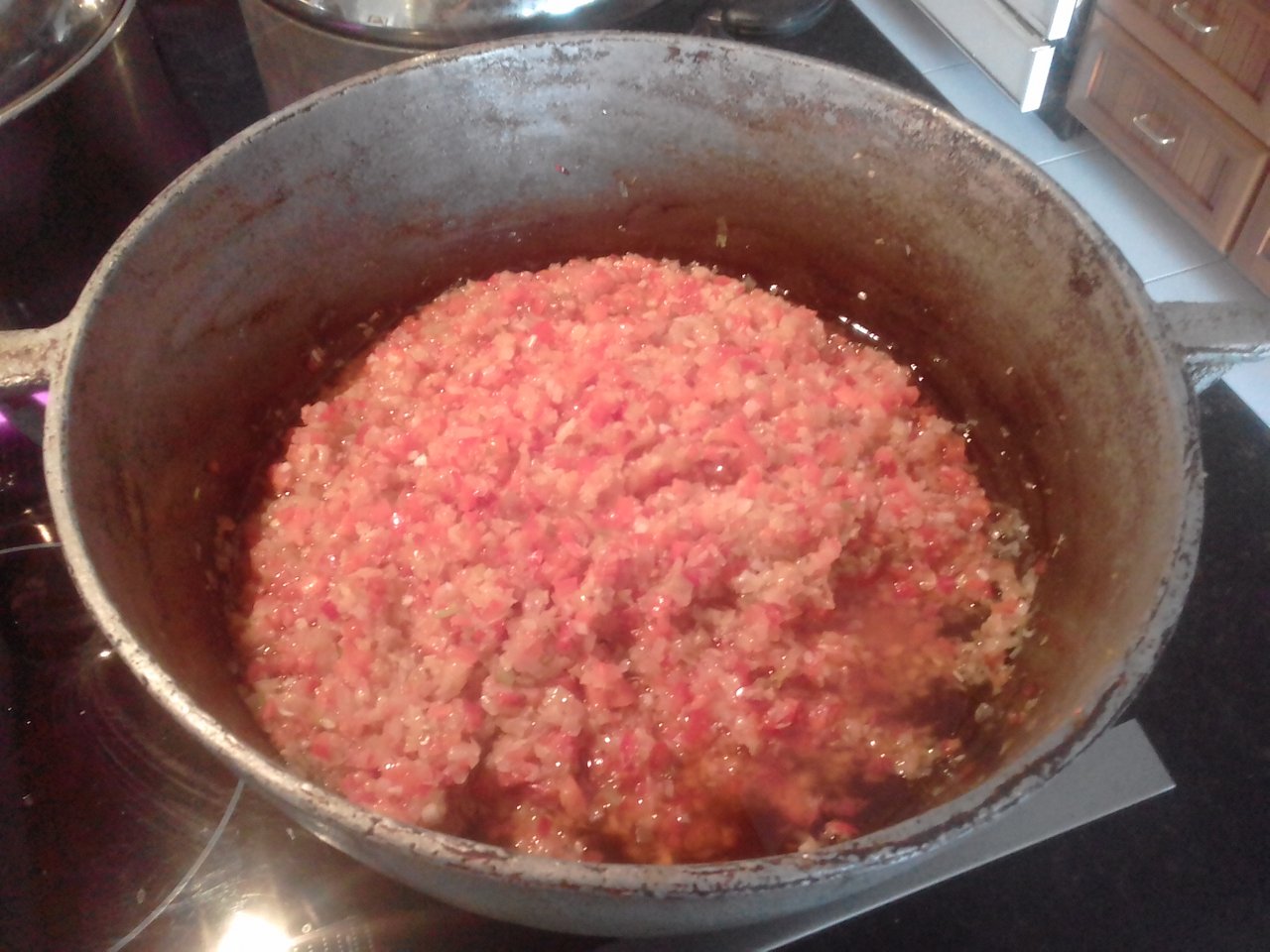
Stir Fry Preparation
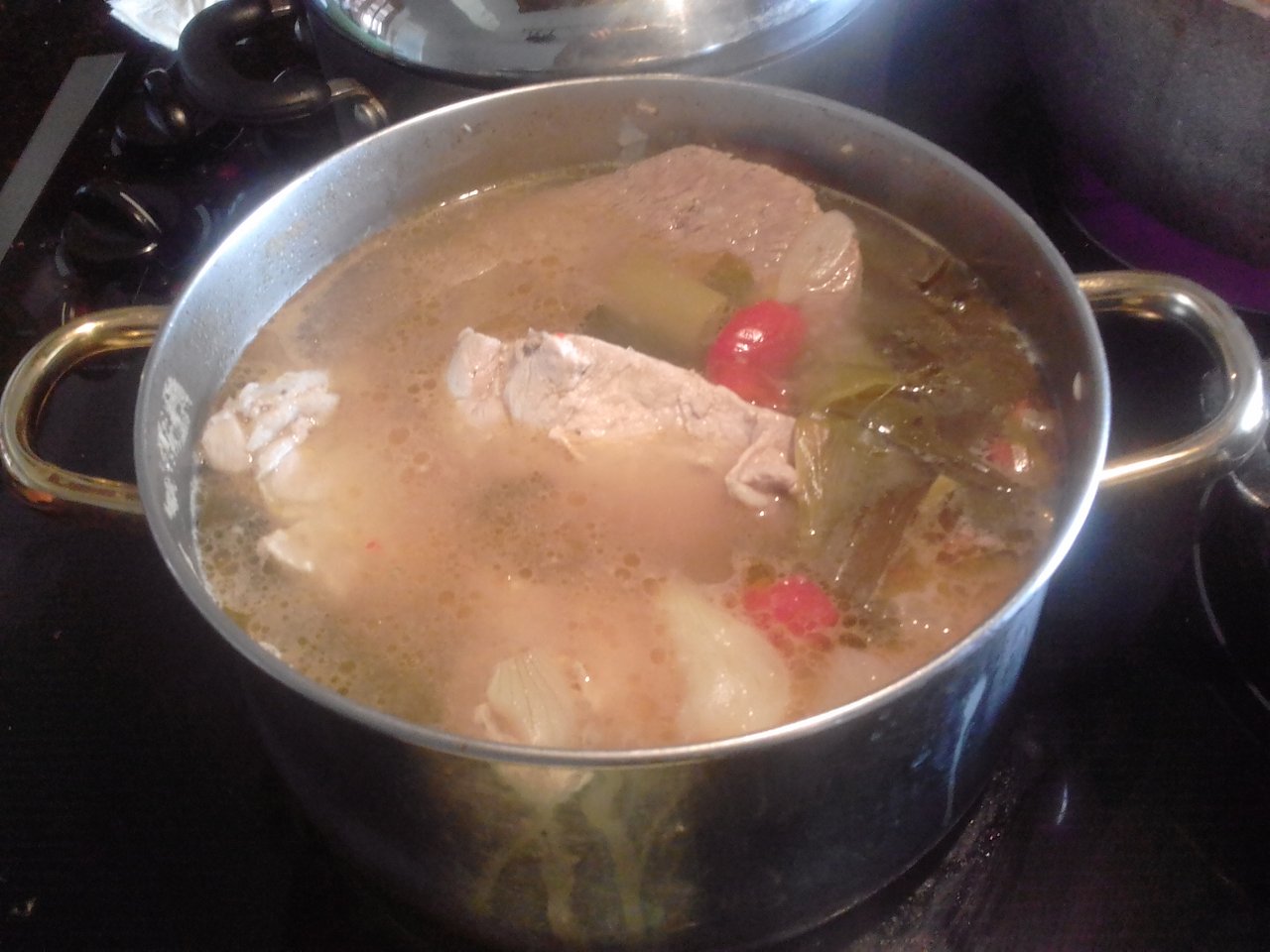
Protein Preparation
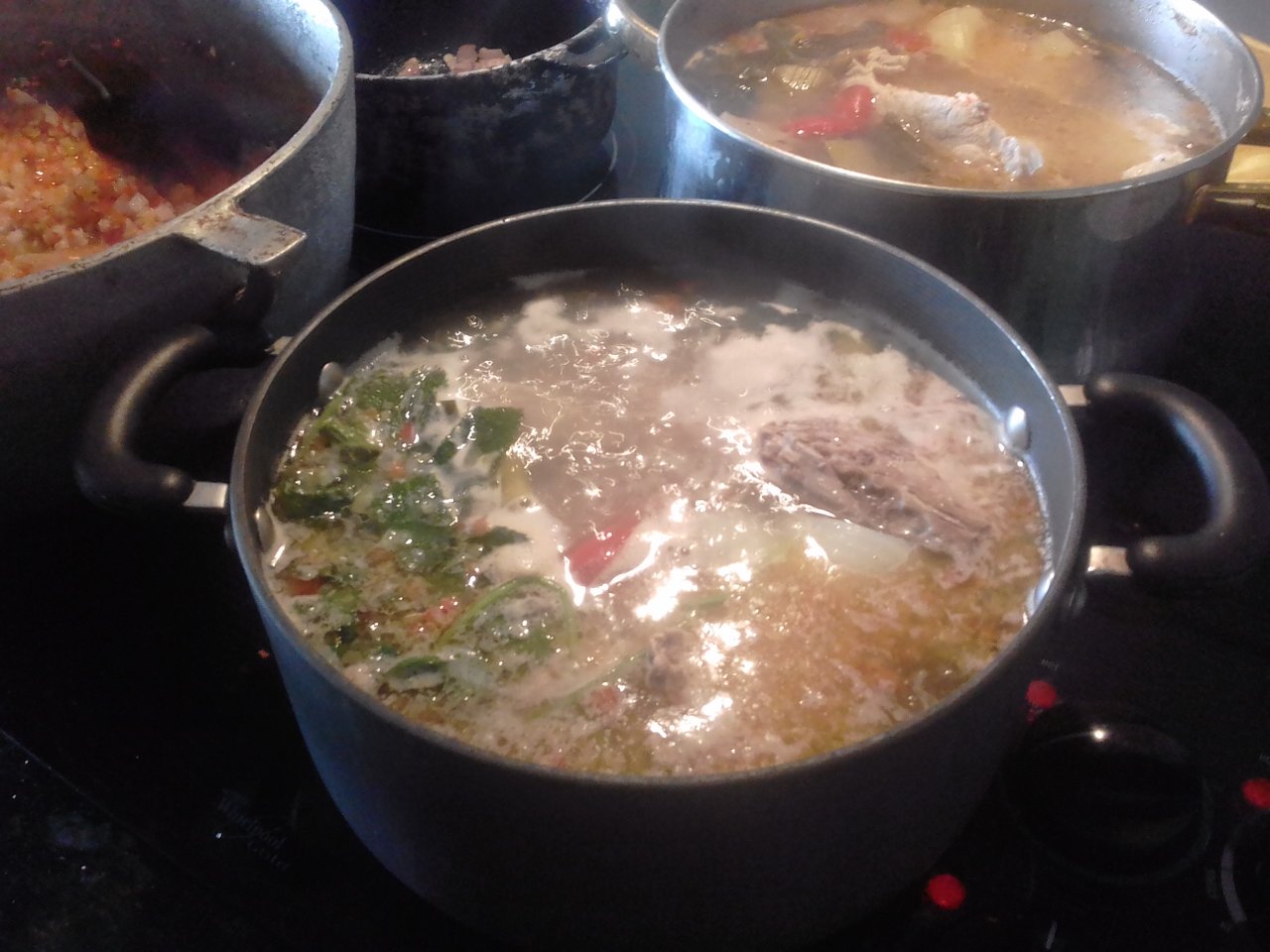
Protein Preparation
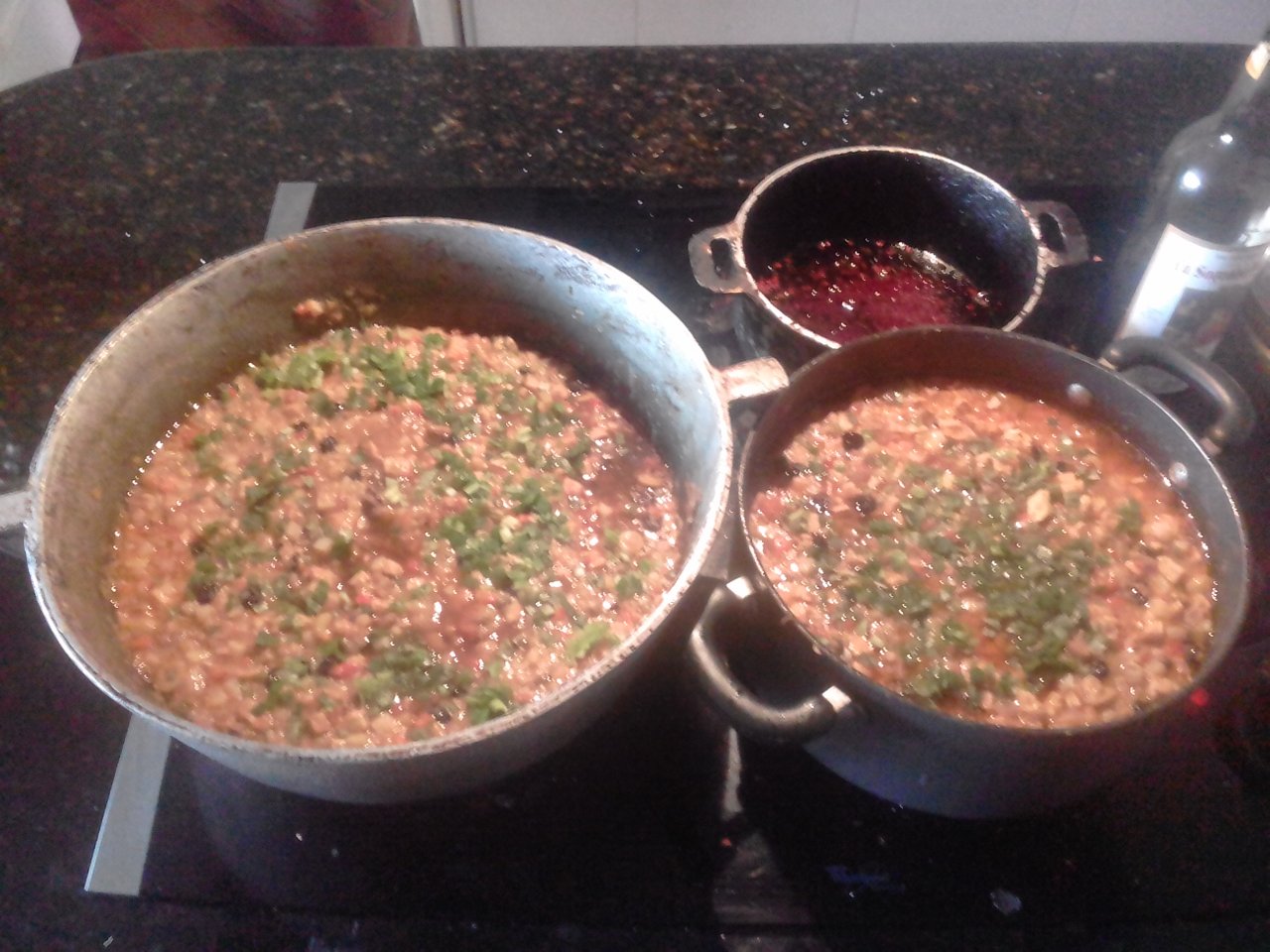
Stew
Subsequently, the corn dough is processed, using the previously pigmented oil with onoto (achiote) and the chicken broth, which is kneaded until the desired texture is achieved. Once the dough is prepared, it is spread on a banana leaf smeared with a little oil in order to facilitate the process and preserve the integrity of the corn dough during cooking.
The next step is to place a handful of the stew on the extended dough, and add the so-called "ornaments", which vary from region to region, and usually include green olives, raisins, slices of meat, pickles, bell peppers, boiled egg, and in the particular case from the city of Caracas, an entire or sliced almond.
Finally, we proceed to wrap the hallacas and tie them with "pabilo", and then introduce them to a pot of boiling water, in which they will remain for a period of time ranging from 30 to 45 minutes, until the end of cooking and ready to serve at the table.
This is a dish that is preferably prepared in December, and its cost of preparation and sale may vary according to the ingredients used, however, it is likely that its cost may range between 3 and 10 US dollars per unit.
During these dates, restaurants usually offer the so-called "Christmas Plate" that, in addition to a hallaca, also includes chicken salad and a slice of ham bread, and occasionally, pork leg, however, this Christmas due to restrictions motivated due to the pandemic, it will surely only be offered under "delivery" and "pick up" modalities, and it is presumed that its sale price exceeds 20 or 25 US dollars per person.
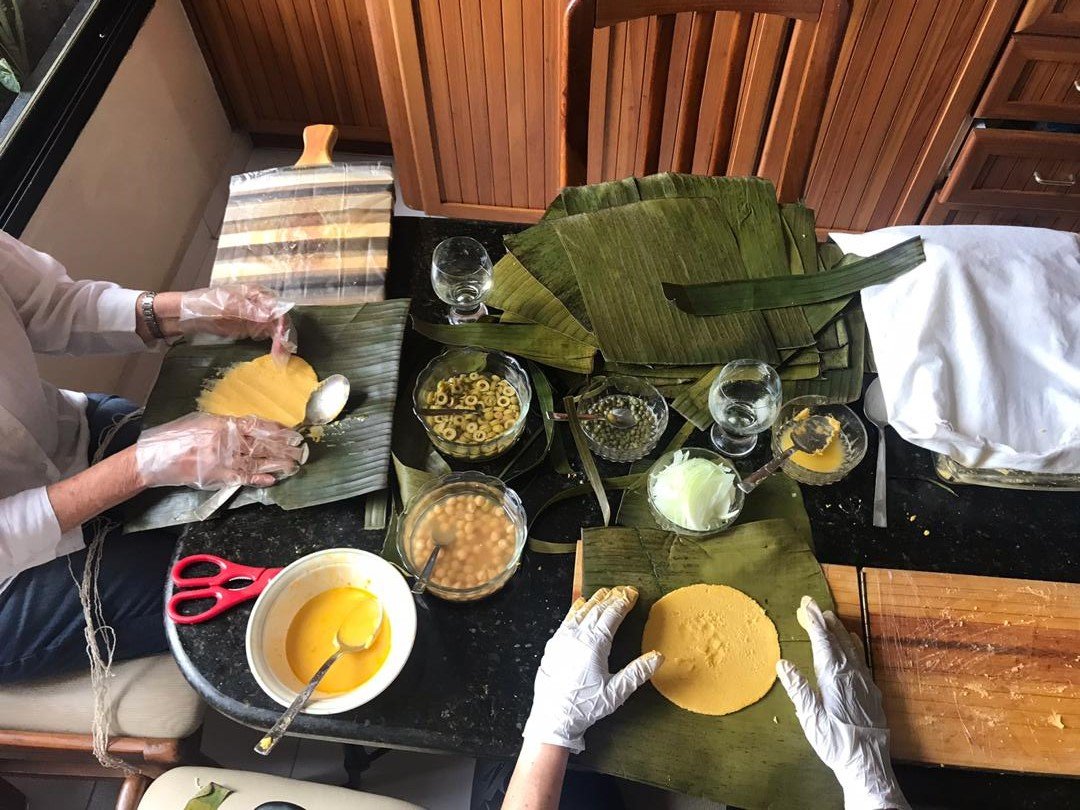
Mass Extension
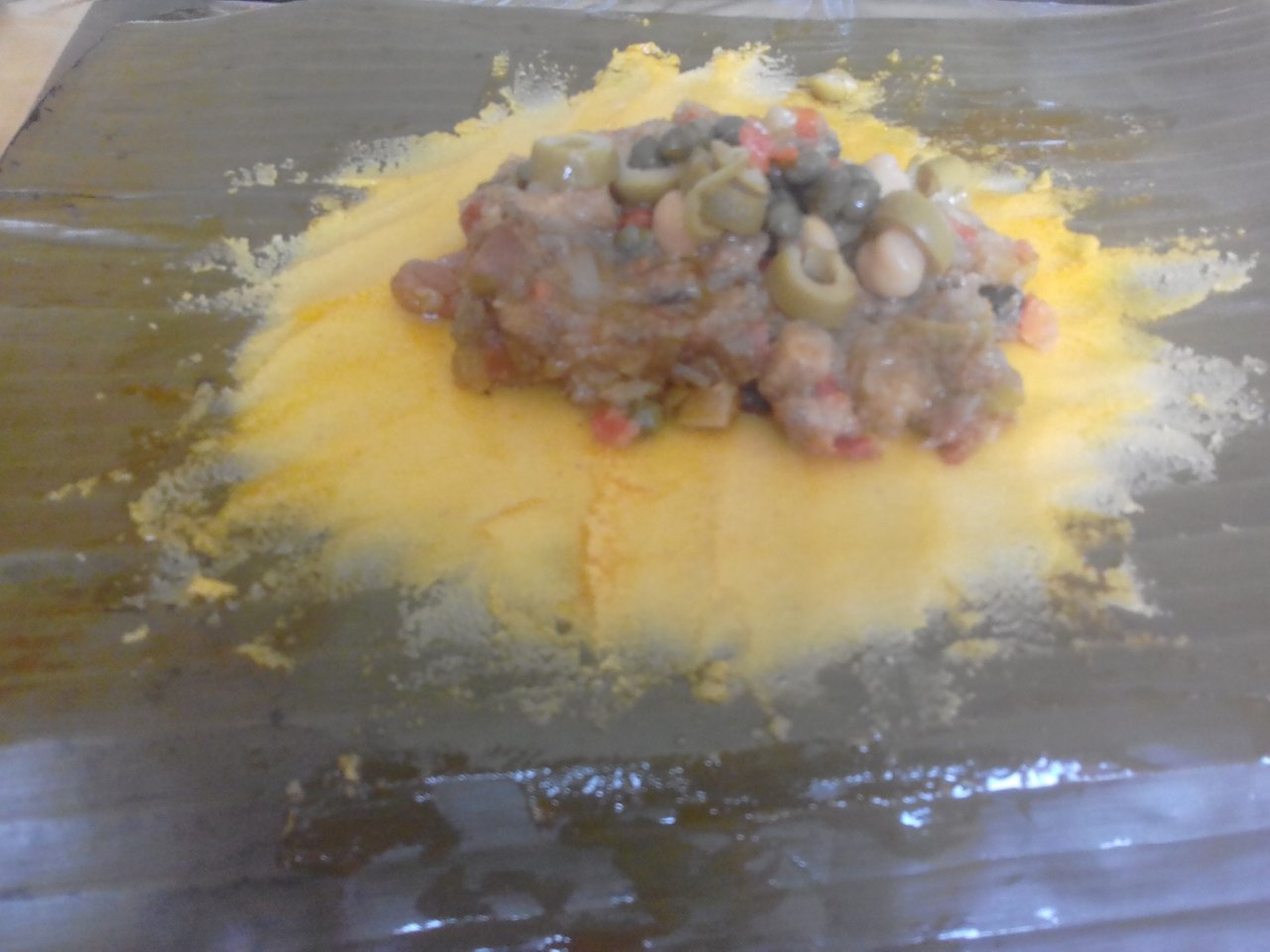
Stew Placement
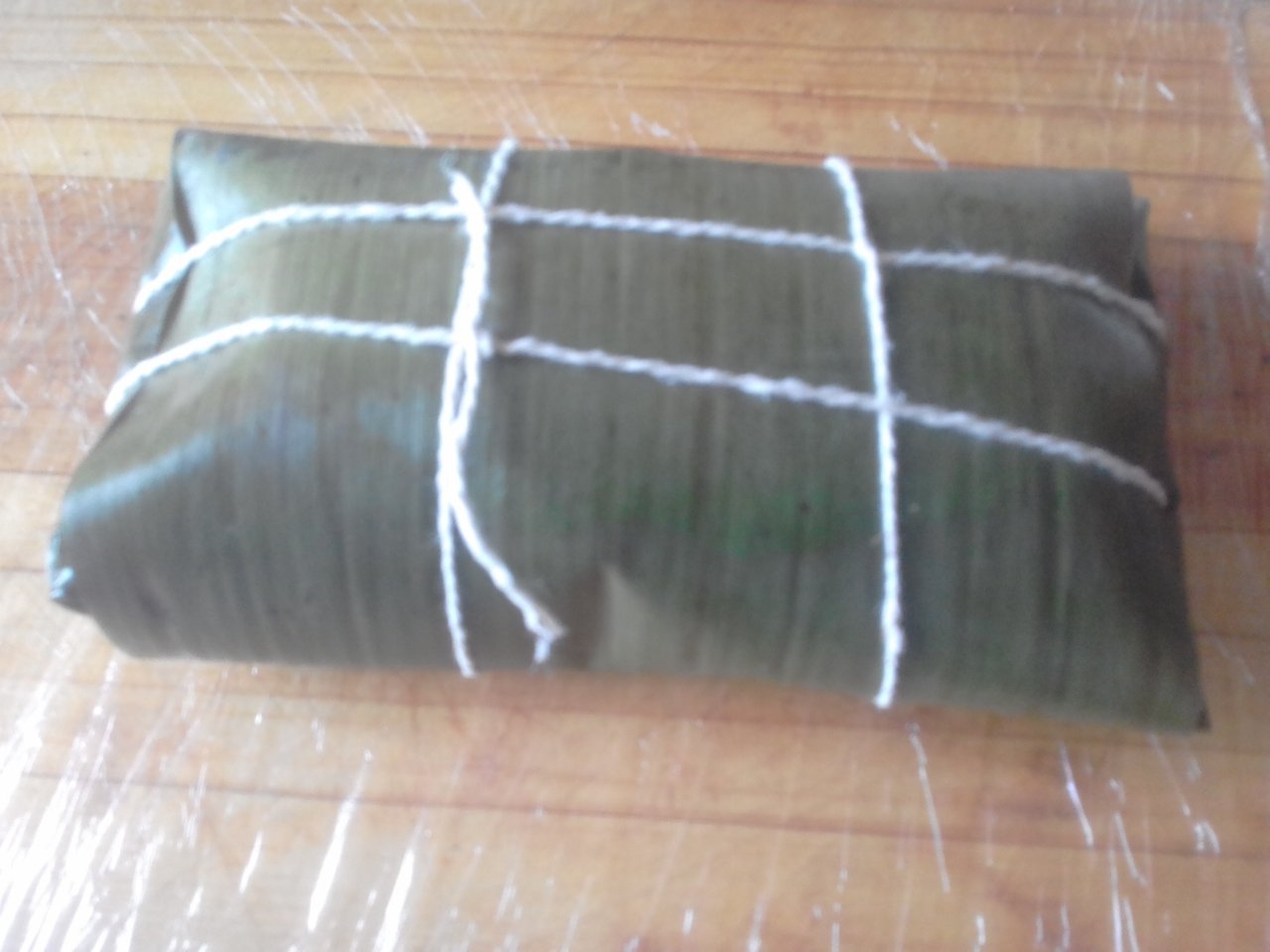
Tied up with Pabilo

Enjoying with Family and Friends
This year, they will probably prepare and consume hallacas in more than fifty countries around the world, due to the phenomenon of forced migration of more than 5.1 million Venezuelans, who venture into unknown lands to escape the acute crisis that plagues to Venezuela, for the reasons we all know and are not part of the scope of this publication.
On these festive dates, our hallaca will be present at the tables of the main cities of the American continent, Spain, some other countries of the old continent and even the far far away Australia, where it is already part of the traditional gastronomic offer of the Christmas season.

- Camera: Samsung Galaxy J1 mini prime
- Editor: PicsArt
- Location: Barquisimeto, Lara, Venezuela
- Date: Dec. 10 and 11-2019
